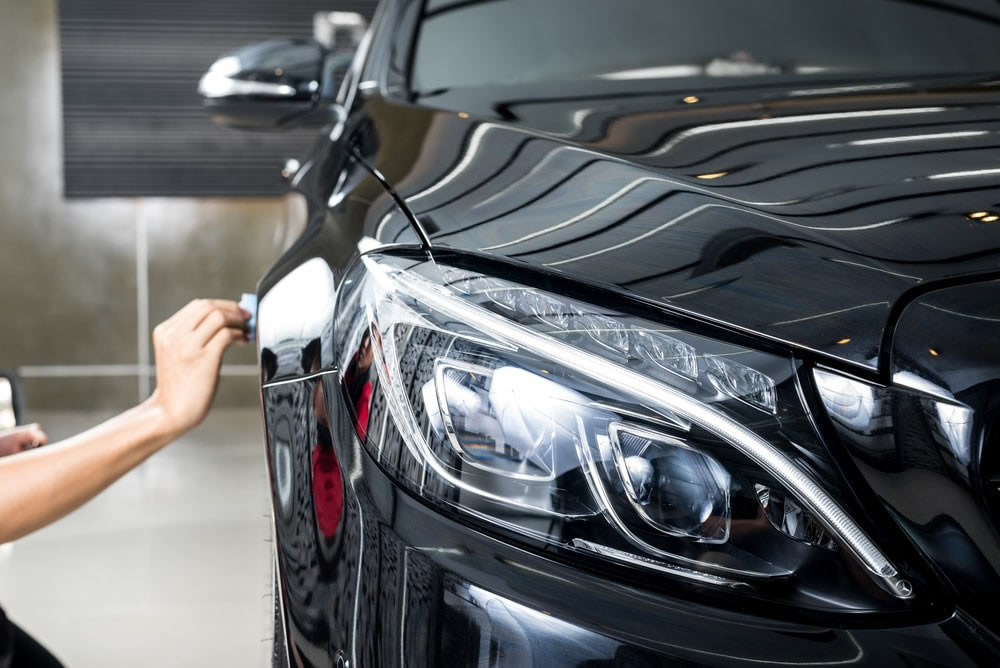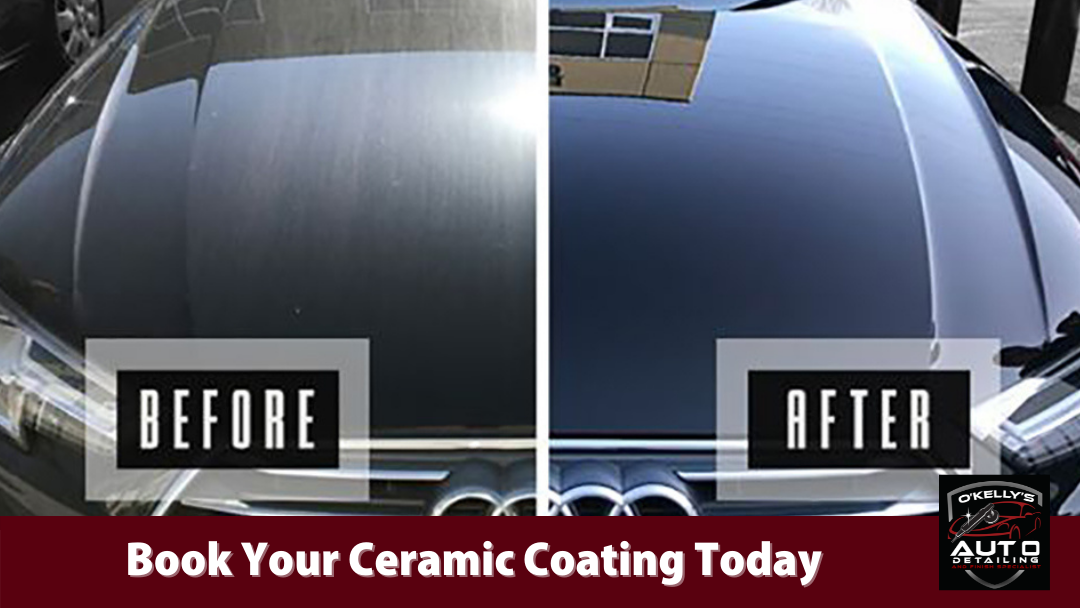How ceramic coating prolongs your vehicle's resale potential.
How ceramic coating prolongs your vehicle's resale potential.
Blog Article
Just How Ceramic Finishing Protects Your Auto's Paint and Keeps It Looking New
Ceramic coating has emerged as a famous remedy for automotive paint protection, offering a robust defense against a variety of environmental threats. The ins and outs of just how this innovation works and its benefits over standard techniques call for a closer assessment, exposing engaging reasons to consider this ingenious method for your car.
What Is Ceramic Finishing?
Ceramic finishing is often considered as an advanced innovation in auto paint defense. ceramic coating. This innovative item is a liquid polymer that chemically bonds with the vehicle's factory paint, creating a protective layer that enhances resilience and visual allure. Unlike traditional wax or sealants, which provide only short-lived defense, ceramic finishes provide durable outcomes, typically spanning numerous years with appropriate maintenance
The key elements of ceramic coverings are silicon dioxide (SiO2) and titanium dioxide (TiO2), which add to their hydrophobic residential or commercial properties. This hydrophobic nature allows water to grain and roll off the surface, properly stopping contaminants like dust, gunk, and bird droppings from adhering to the paint. Subsequently, automobiles treated with ceramic coverings call for less constant washing and are less complicated to preserve.
In addition, ceramic finishings give UV security, which aids prevent oxidation and fading of the paint as a result of sun direct exposure. This facet not only preserves the car's aesthetic allure but likewise adds to its resale worth over time. Generally, ceramic coatings represent a substantial jump forward in the realm of vehicle care, supplying a durable service for automobile proprietors looking for to preserve their investment.
Exactly How Ceramic Layer Works
Ceramic coating consists of a liquid polymer that chemically bonds with the manufacturing facility paint of a car (ceramic coating). The key part of ceramic coatings is silica dioxide (SiO ₂), which provides superior hardness and strength versus scrapes, UV rays, and various other outside pollutants.
When applied correctly, the covering penetrates the microscopic pores of the paint surface area, developing a semi-permanent bond. This causes a smooth, shiny coating that improves the car's aesthetic appeal while simultaneously warding off water, dirt, and grime. The hydrophobic nature of the covering makes certain that impurities move off easily, reducing the regularity of washing and the possibility of scrapes throughout cleansing.

Advantages of Ceramic Finish
The application of ceramic coating offers numerous benefits that dramatically boost the defense and look of an automobile's paint. helpful resources One of the key benefits is its capability to create a robust, hydrophobic layer that wards off water, dust, and various other impurities. This residential property not only keeps the surface cleaner for longer periods but likewise makes cleaning the vehicle simpler and much less labor-intensive.
Additionally, ceramic layers offer exceptional protection versus damaging UV rays, which can bring about oxidation and fading over time. ceramic coating. This UV resistance helps keep the initial shade and gloss of the automobile's paint, thus protecting its visual allure for several years
Moreover, ceramic coverings are chemically resistant, supplying defense against acidic pollutants such as bird droppings, tree sap, and roadway gunk. This resistance helps stop etching and discoloration, which hop over to here can compromise the stability of the paint.
Lastly, the resilience of ceramic finishings expands past typical waxes and sealers, frequently long lasting a number of years with appropriate maintenance. This resilient protection inevitably equates into cost savings, as vehicle proprietors can minimize the frequency of reapplication and upkeep efforts. Generally, ceramic finishes stand for a substantial financial investment in car treatment.
Comparing Ceramic Covering to Typical Methods
Frequently forgotten in the quest for ideal automobile protection, the comparison between ceramic finish and typical techniques such as waxing and sealants discloses considerable distinctions in resilience, performance, and maintenance. Standard waxes typically offer a temporary safety layer, commonly lasting just a couple of weeks to a couple of months, while sealants can expand this period to numerous months. In comparison, ceramic coatings offer a robust, durable guard that can sustain for a number of years when correctly used.
In terms of efficiency, ceramic layers display premium hydrophobic properties, efficiently fending off water and impurities, which avoids dust and gunk from sticking to the surface area. This property not just boosts the vehicle's look however also simplifies the cleansing process. Standard waxes and sealants, while they may use some water resistance, do not match the level of security provided by ceramic finishes.
The upkeep regimen for both alternatives diverges considerably. While conventional techniques require constant reapplication and upkeep, ceramic finishes are created to withstand the rigors of daily driving with minimal treatment, making them a more efficient option for auto lovers looking for lasting defense. Inevitably, the choice in between ceramic finishing and standard techniques depends upon the wanted level of security and maintenance dedication.
Maintenance Tips for Porcelain Coated Cars
Keeping a ceramic layered car calls for a strategic technique to guarantee the durability of the safety layer. Utilize a pH-neutral shampoo and microfiber clean mitts to avoid scraping the layer while successfully removing dust and impurities.
In addition, avoid automated auto cleans that utilize brushes, as these can compromise the honesty of the ceramic finishing. Rather, select a touchless wash or a hand wash. After cleaning, drying out is crucial; utilize a high-grade microfiber towel to avoid water spots.
Applying a ceramic-specific upkeep spray can boost the finishing's hydrophobic buildings and include an extra layer of protection. This must be done regularly, relying on your driving conditions.

Verdict
Finally, ceramic coating works as an efficient safety action for automobile paint, using a durable barrier versus ecological damages and boosting the automobile's aesthetic appeal. Its unique residential properties, consisting of hydrophobicity and UV defense, add to lasting shine and tidiness. Contrasted to standard approaches, ceramic finishes present premium performance and durability, inevitably reducing maintenance efforts. Embracing ceramic coating innovation can substantially expand the lifespan of an automobile's exterior, guaranteeing it stays aesthetically enticing and well-protected.
Report this page